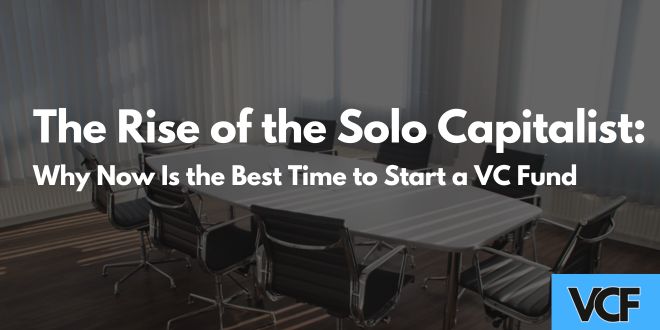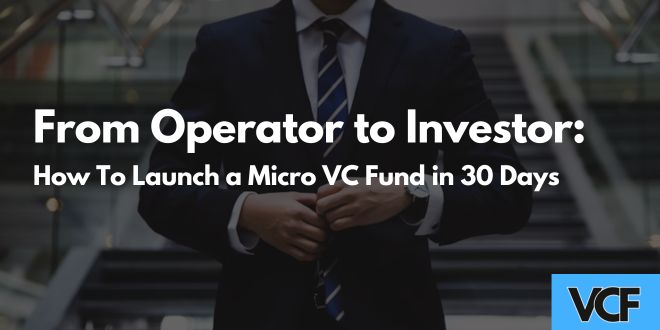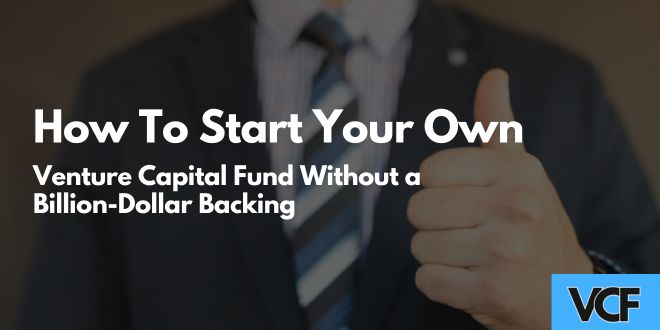Venture Capital Funding used to be a gated community. Unless you had an Ivy League MBA, decades of industry connections, and a corner office on Sand Hill Road, the odds of launching your own fund were slim. Today, that fortress has cracks, and individual “solo capitalists” are pouring through. If you’ve ever day-dreamed about writing checks rather than pitching decks, the current environment is the most forgiving (and, frankly, exciting) we’ve seen in decades. Here’s why.
Low-Friction Fund Structures Are Finally Real
A decade ago, forming a venture fund required eye-watering legal bills, a compliance playbook thick enough to double as a step-stool, and a Rolodex of deep-pocketed limited partners (LPs). Now?
- Rolling Funds and SPVs: Platforms like AngelList, Assure, and Sydecar let solo GPs spin up a Special Purpose Vehicle or rolling fund in days, not months. Legal, banking, and KYC checks are mostly baked into the software.
- 506(c) General Solicitation: The 2013 JOBS Act opened the door for publicly advertising a fund to accredited investors. That single regulation shifted the balance of power from legacy institutions to scrappy operators with compelling theses.
Bottom line: structural headaches that once required a small army are now SaaS features you can click through.
Founders Actively Court Solo Capitalists
Founders have soured on large syndicates where every decision requires a conference call and three layers of partner approvals. Solo capitalists are, by definition, fast.
- Clear cap tables: One check, one name, minimal complexity.
- Aligned incentives: Solo GPs often invest personal capital alongside LP money, so their upside mirrors the founder’s.
- Personal touch: When a single person wires the funds, that same person answers late-night Slack pings about hiring a VP of Sales or negotiating a follow-on round.
In an era where speed and trust outrank brand prestige, a nimble solo GP can edge out billion-dollar firms that need to run every deal through Monday-morning committee.
LPs Crave Novel Exposure
Public equities feel fully valued, bonds offer meager returns, and crypto’s volatility still scares the average family office. Venture Capital Funding, particularly at the early stage, remains one of the few asset classes capable of delivering 20-30%+ IRRs.
- Smaller funds = More upside: A $15 million fund doesn’t need a Stripe-level outcome to return multiples; one or two $100 million exits can do the trick.
- The Tiger Global hangover: Mega-funds that paid late-stage premiums in 2021 are now sitting on markdowns. LPs want fresh managers with cleaner portfolios, not baggage from the bubble.
- Sharpened theses: Whether you focus on AI infrastructure in emerging markets or the intersection of climate tech and logistics, a crisp, differentiated story resonates with LPs more than a generic “we invest in great founders” deck.
4. Operating Experience Is Suddenly King
Previously, the route to a GP seat went through investment banking or consulting. But modern founders don’t want a finance lecture, they want battle-tested advice from someone who’s actually shipped a product, run burn-rate calculations, and fired underperforming VPs.
If you’ve:
- Scaled a SaaS startup from Series A to exit,
- Managed an engineering org through hyper-growth, or
- Built a community of developers, gamers, or creators,
you wield firsthand knowledge most traditional VCs can’t fake. That edge translates into differentiated deal flow and credibility when term-sheet season arrives.
5. Remote Work Expands Deal Flow, And Lifestyle
The pandemic taught us two things: software eats geography, and Zoom eats board meetings. A solo capitalist in Austin, Lisbon, or Lagos can source and support companies globally without red-eye flights every other week.
- Twitter/X and LinkedIn DMs supply a parade of warm intros.
- Product Hunt, Discord, and niche Slack communities surface builders months before they appear on Crunchbase.
- Digital nomad LPs don’t mind that the GP spends winters in Bali, so long as the portfolio metrics look healthy.
Translation: you can run a globally ambitious fund from a WeWork desk… or a spare bedroom.
Valuations Have (Finally) Reset
Yes, 2021’s frothy term sheets made founders feel like celebrities, but they also hurt net-new fund managers who entered at peak prices. By contrast, 2024 valuations have re-rated to saner multiples, especially outside core AI deals. Deploying capital today means absorbing less downside risk while still capturing massive upside when the IPO window inevitably reopens.
Secondaries Provide Earlier Liquidity
One reason LPs favor established firms is time-to-liquidity. They’d rather not wait a decade for their first distribution. The rise of robust secondary markets, Forge, Nasdaq Private Market, and direct-to-fund tender offers, lets a solo GP return capital within three to five years on breakout winners. Faster DPI (Distributions to Paid-In) numbers turn first-time LPs into repeat backers.
Your Personal Brand Scales Further Than Ever
Whether you run a newsletter, host a niche podcast, or tweet thoughtful threads, you can cultivate an audience that doubles as both deal flow and LP pipeline. Consider:
- Sahil Bloom converting Twitter followers into Rolling Fund subscribers.
- Lenny Rachitsky leveraging his product management newsletter to access early-stage SaaS gems.
- Turner Novak memeing his way into high-quality consumer social deals.
When you are the media company, marketing overhead collapses to near-zero and authenticity compounds.
How to Get Started (Without Getting Overwhelmed)
Pressure-test your thesis
Pick a sector or founder archetype you understand better than 99% of investors. “I invest in climate fintech founders emerging from LatAm accelerators” is more believable than “We do AI, web3, healthtech, and consumer.”
Raise a “proof-of-concept” SPV
Before convincing LPs to commit to a multi-million-dollar blind pool, lead one deal via an SPV. Show your network you can:
- Find a great startup,
- Convince the founder to accept your check, and
- Close legal paperwork without drama.
- Clean, oversubscribed SPV is your best calling card for a larger vehicle.
Stack your LP base strategically
Blend high-net-worth friends, exited founders, and niche family offices that care about your sector. Diversity reduces concentration risk if one LP’s financial situation changes.
Automate the back office
Adopt Carta for cap-table management, Vesto for cash sweeps, and AngelList for fund admin. You didn’t become a solo capitalist to chase K-1s in April.
Treat founders like customers
Reply within hours, not days. Share bite-sized, actionable feedback. Make one intro that moves the revenue needle each quarter. Your reputation as “useful money” is your most defensible moat.
Caveats to Keep You Honest
- Fund size discipline: The temptation to raise bigger, faster is real, but a $40 million second fund can torpedo returns if your sweet spot is pre-seed.
- Regulatory homework: Even with platform support, you still need to file Form D on time and adhere to SEC advertising rules. Hire competent counsel; it’s cheaper than an enforcement action.
- Emotional stamina: Solo means solo. There’s no partnership off-site where you vent about a down round. Cultivate peer GPs for sanity checks and moral support.
Closing Thoughts
The term “venture capitalist” once conjured images of mahogany boardrooms and monogrammed cuffs. Today, it might describe a single operator with a MacBook, a sharp thesis, and a Twitter handle. Markets have cooled, yes, but that reset has pruned excess and leveled the playing field for hungry newcomers.
If you’ve accumulated the domain knowledge, network, and appetite for risk, the door is wide open. Take a hard look at the trends, streamlined fund formation, founder preference for speed, LP hunger for differentiated returns, and tools that collapse geography, and ask yourself: if not now, when?
Launching a fund isn’t easy. It’s a grind of Zoom calls, legal memos, and endless calendar invites. But for the first time in the venture's 40-plus-year history, individuals, solo capitalists, can credibly compete with the legacy franchises. Pull together your thesis, rally your first cohort of LPs, and jump in. The next generation of iconic companies is already building. They just need someone bold enough to back them, maybe even someone like you.








